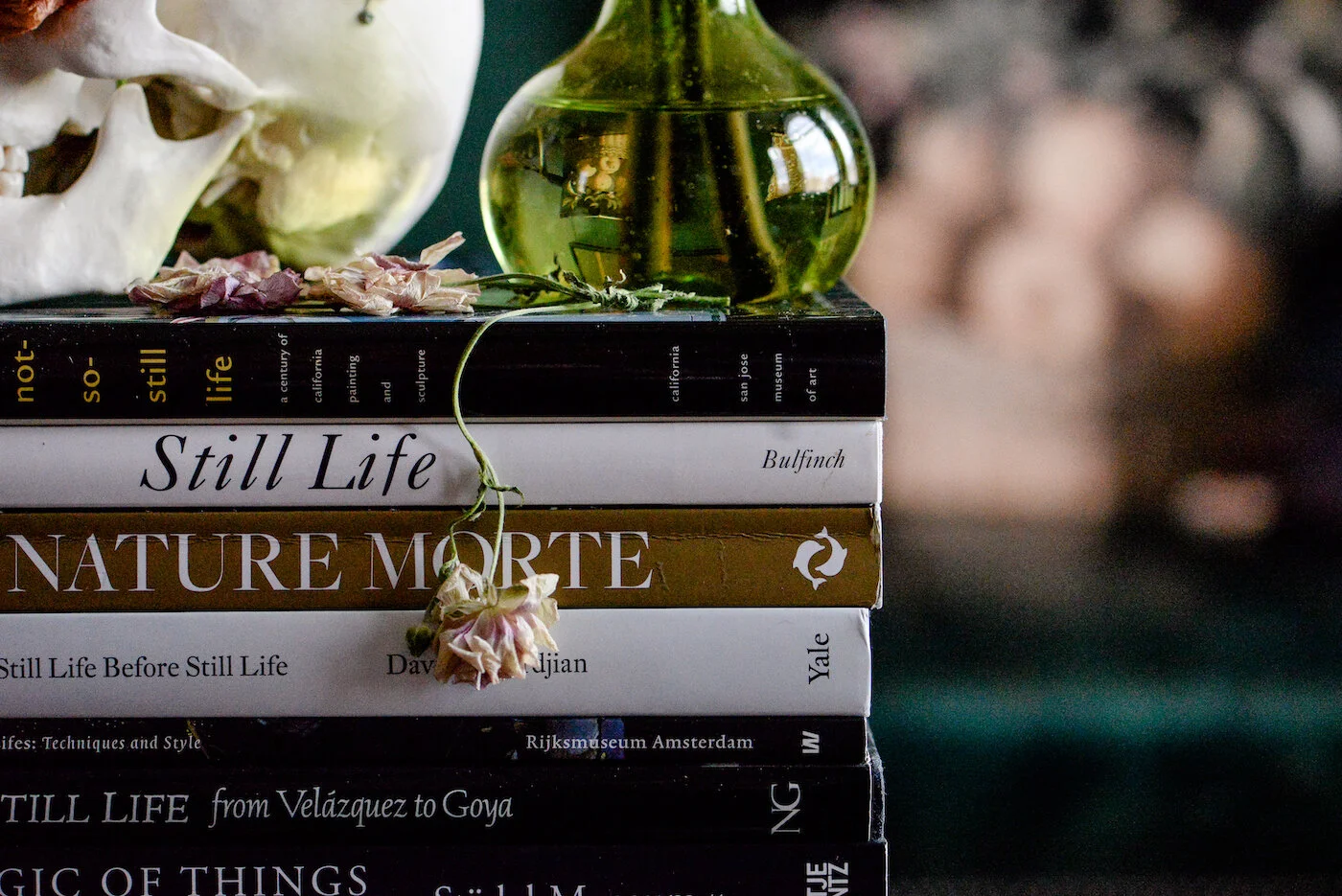Why Still Life Might Speak to You Now
As you know, still life is my jam. I’m writing a book of essays about still life as we speak. I’ve written one in the past. I’m married to an artist who has spent most of 30 years painting still life in one form or another. There are a lot of themes and subsets to still life — always more going on in one than meets the eye. Still lifes are in many ways about the extraordinary nature of ordinary life, everyday existence. And these days when we are steeped in the ordinary life, I think it makes sense to look at the genre of still life, and the stills in our everyday life. Odds are you have been doing this, whether you’ve noticed or not. But my guess is that you are noticing. You are baking bread and cinnamon buns and loaves. You are setting up your cocktails and ingredients into pleasing arrays. You are stacking your books and instagramming your lipsticks. You are setting your wine beside the bread and grapes and wedge of cheese. You are filling bowls with lemons and cutting up your cantaloupes and maybe you are arranging flowers, tulips, roses, hyacinths. Your children are bored, perhaps, and reminding you a thousand times a day of the passage of time, of transience. Maybe you are frothing your beautiful coffees and admiring them. Still lifes, all.
The beauty of a still life is that while it may more overtly say, “memento mori,” (in the case of my skull photographs) many traditional still life objects, flowers, remind us that tempus fugit. We have the beauty of the blooms, in floral still lifes, which will not last, often in combination with perishable food and fruit. There are very often precarious items placed, and the disruption of cats, or yapping dogs. Because life is precarious, and full of unknown interruptions and disruptions, loud noises, the unexpected.
Still lifes remind us that everything is always happening at once. There are terrible sad things right beside sensual and lovely things. We are learning every day that the so-called ordinary life is in the details, it’s in the numbers.
I can’t stop thinking about the trend to make bread and Dali’s obsession with bread. For those of you who have followed Rob’s work over the years, you might remember that as part of a series titled, History of Still Life, he did a riff on Dali’s bread. Essays have been written about Dali’s bread.
We usually think of Dali’s melting clocks and surreal imagery but he said of bread that it “has always been one of the oldest fetishistic and obsessive subjects in my work, the one to which I have remained the most faithful.” Bread is a trope throughout Dali’s work — used to comment on consumerism, mass consumption, capitalism, moral hunger, etc. Bread has the ability to hold so many meanings at once and to resonate through time and take on new connotations and historical moments. Bread is always with us.
When I think of bread I also think of the words of Gaston Bachelard. On bread in poetry and its place in the memories from childhood he says, “In days of happiness, the world is edible.” And “I am taken by the urge to collect all the warm bread to be found in poetry.” And then, “How they would help me give to memory the great odors of the celebration begun again, or a life which one would take up again, swearing gratitude for the original joys.”
Perhaps it will be the perfume of baking bread at this time that will permeate children’s memories when they are grown. Perhaps, though lonely, they’ll come away with happier memories than we imagine.
It seems absurd that you can scroll through social media and see death tolls, and stories of the effects of this terrible illness, the ravaging of bodies, and then hear reports of the most horrific mass murder in Canada. And interspersed with that are photos of bread and baked goods and flowers and the new leaves and blossoms in some parts of the world — not here.
It’s a lot to process, as is said, and it really freaking is. But we can hold it. We can, we do. Still lifes have always held all these difficult and brutal and beautiful things in the palm of their hand. The French call it Nature Morte, but even so, still life is on the side of the living. It’s on the side of poetry, and prayer, on the side of contemplation and patience and the long settled gaze. Still life is on the side of love, transforming all of the truths about death and the precariousness and preciousness of our existence into love, and into beauty. Still lifes are full of imperfections and limited by the parameters of the genre. A still life may include objects, a table, various degrees of light and shadow. But it is also the magic show that can turn our everyday life, complete with fear, frustration, spills, awkwardness and failures, into something that takes your breath away. Something you can sit with for a long spell, and see your way into and back out of.
A still life has the potential to hold, if not everything we’re experiencing right now, a lot of it. I have a strong belief in the power of words, but when words are difficult, we can find a lot of expression in things. A still life can be a place to express and experience hard to say and even unsayable words in a difficult time. And perhaps later, through them, we can come back and formulate more thoughts. We will remember the sorrows and those we lost, but we will also remember the original joys, for example, our faithfulness to bread.







